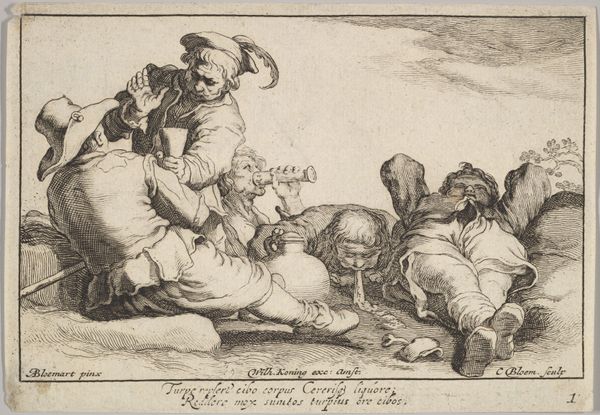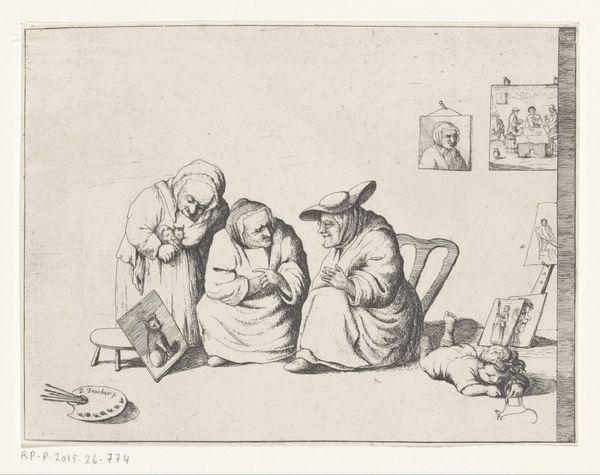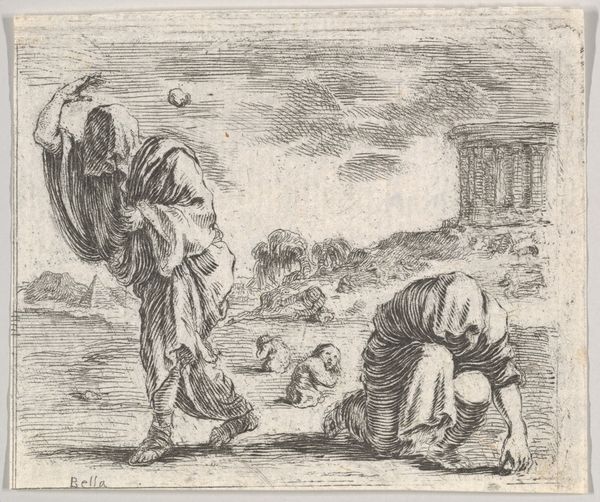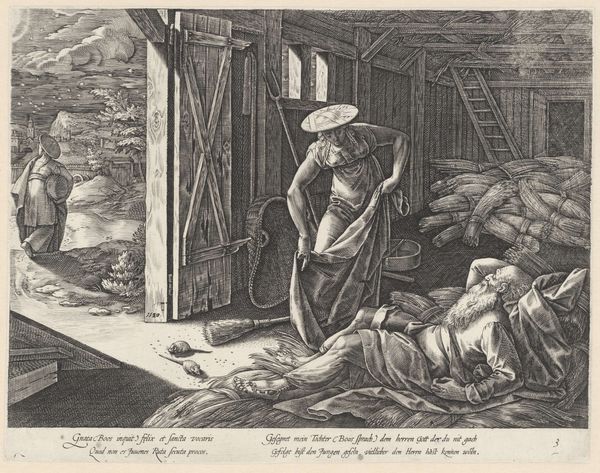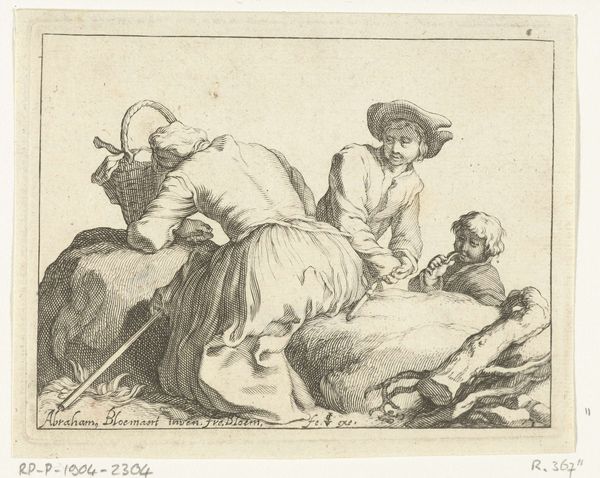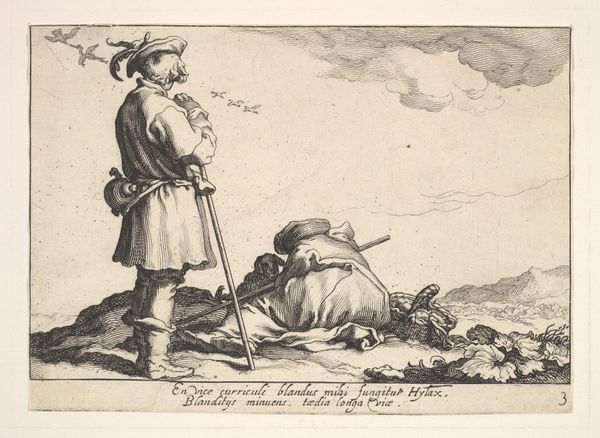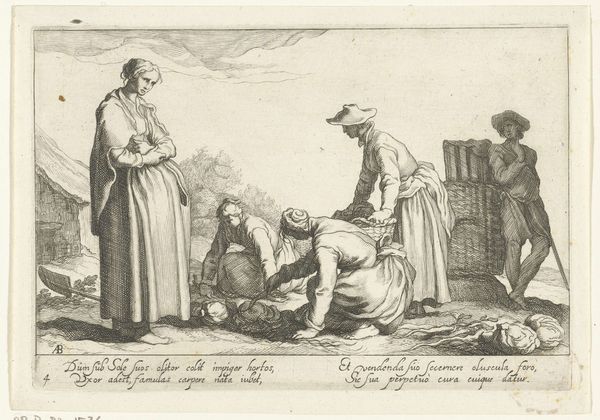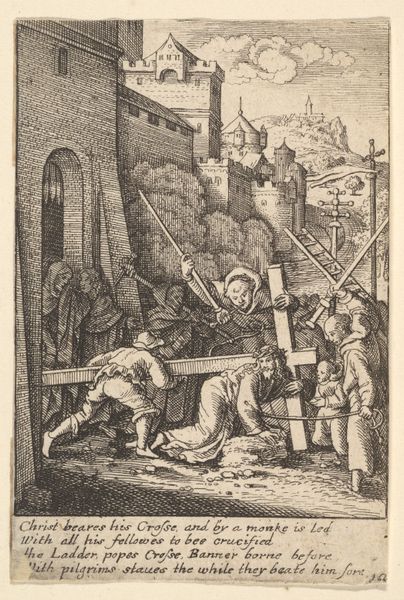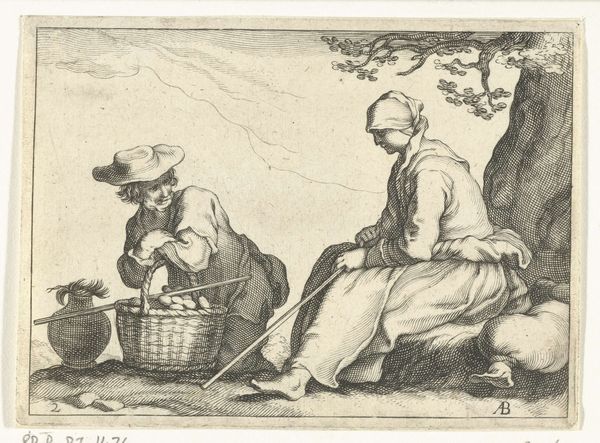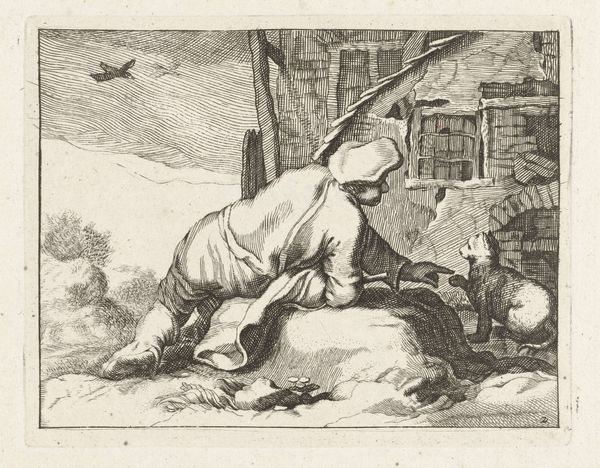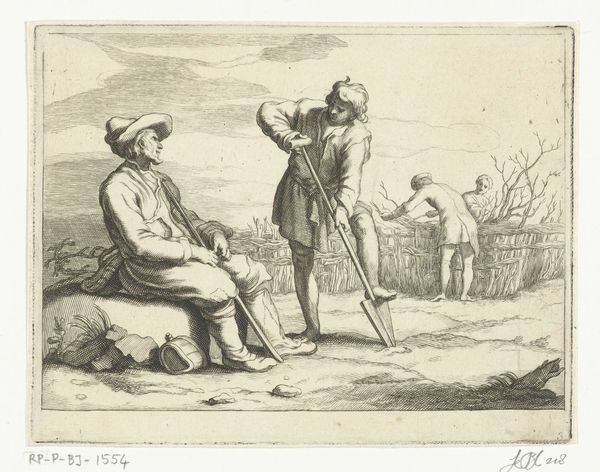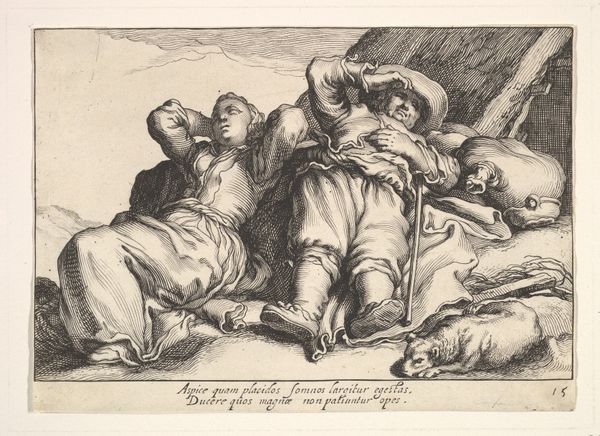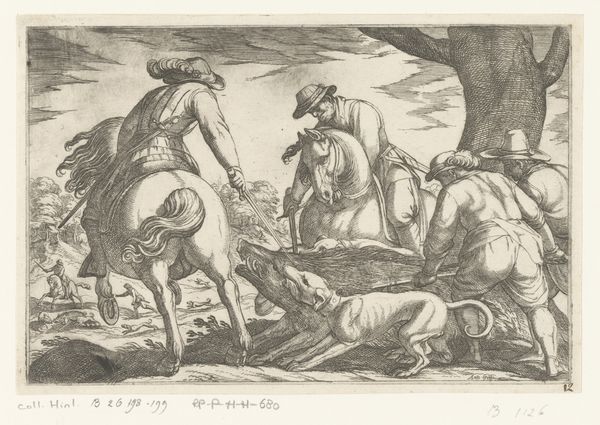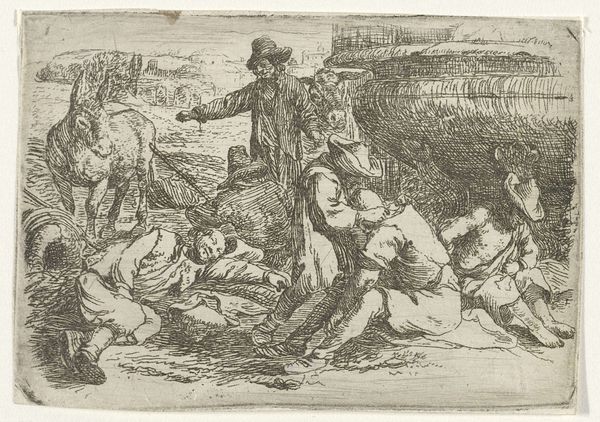
drawing, print
#
drawing
#
baroque
# print
#
landscape
#
figuration
#
genre-painting
Dimensions: sheet: 4 5/16 x 5 7/8 in. (11 x 15 cm)
Copyright: Public Domain
Curator: So, we're looking at Cornelis Bloemaert’s “Pleasures of Occupation,” created sometime between 1610 and 1684. It's currently housed at the Met. Editor: Yes, it's a print, and I find it kind of… intriguing. One figure is asleep, seemingly exhausted, while another stands nearby, more alert with a dog by their side. What draws your attention when you see it? Curator: Immediately, I consider the means of production and its role. Prints, like this one, democratized art in a way that paintings couldn’t. How many copies could Bloemaert produce? To what social strata did the copies circulate and how would their interactions be shaped by class, the economic realities depicted in the piece? It forces us to question traditional notions of artistic value tied to uniqueness. Editor: I see, so the *making* of the art, the material aspect of the printmaking, changes who could access art. Curator: Precisely. Think about the labor involved – the engraver's skill, the paper production, the distribution networks. It’s not just about aesthetic pleasure; it’s about a whole system of production. Consider the image itself – we see a dichotomy between labor and rest, engagement and escape. How might this be seen through lens of consumerism? Editor: Interesting... Could you elaborate on how we might view this artwork through the lens of consumption? Curator: Think of it as an early form of advertising: presenting the “pleasures” tied to the “occupation," and selling ideals of labor and lifestyles, and who ultimately benefitted from these ideals, i.e., were the consumers upper or lower class citizens, etc.? And what about the tools lying beside the sleeping man and his pack? It suggests a potential to acquire and benefit. Are we meant to aspire towards their reality? Editor: That’s a completely different way of looking at it than I expected. I never considered how much the process informs the art itself. Curator: Absolutely. Understanding the social and economic context surrounding the creation of art is just as important as analyzing its visual elements. I think it’s easy to be so caught up in simply viewing something, you fail to consider its historical impact. Editor: I’m definitely going to pay more attention to those things from now on! Thank you for sharing those viewpoints with me, those perspectives were incredibly enriching.
Comments
No comments
Be the first to comment and join the conversation on the ultimate creative platform.
